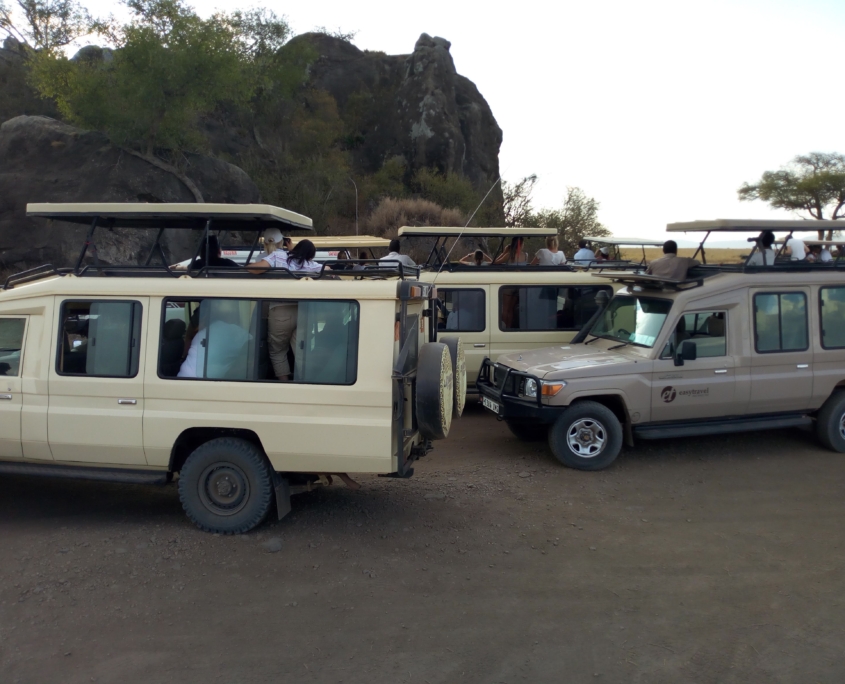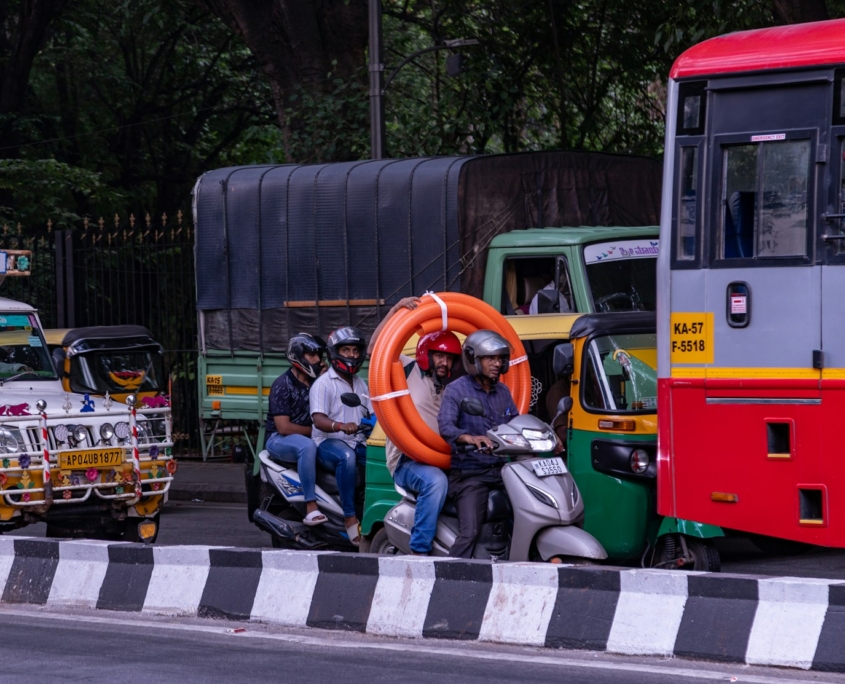I.T. Transport
Intelligent transportation solution
Intelligent transportation solution
Predominantly consists of Integrated Rural Accessibility Planning, development of Accessibility Indicators, use of RED, and use of HDM4.

At IT Transport, we also focus on catalysing positive transformation within rural communities through our specialised Integrated Rural Accessibility Planning (IRAP) services. As a consultancy firm specialising in roads and transport, we deeply understand the pivotal role that transportation infrastructure plays in nurturing economic growth, fostering social inclusion, and promoting sustainable development in rural areas.
IRAP embodies a holistic approach to enhancing transportation infrastructure and accessibility, strategically integrating elements such as road networks, public transportation systems, and non-motorised transport options to bolster connectivity and mobility for rural residents. Our IRAP services at IT Transport are underpinned by a multifaceted approach tailored to address the distinctive challenges and opportunities encountered in rural settings. We commence with the development of accessibility indicators, leveraging data-driven insights to pinpoint areas for improvement and prioritise interventions for maximal impact. Utilising tailor-made tools such as Rural Accessibility Evaluation Tool (RED), we conduct meticulous assessments of rural road networks and transport services, enabling us to optimise resource allocation and simulate various scenarios for enhanced efficiency. Moreover, we emphasise stakeholder engagement, collaborating closely with local communities, government agencies, and other stakeholders to ensure that our IRAP initiatives resonate with local priorities and needs.

We recognise the vital importance of efficient and sustainable transportation systems as the lifeblood of any region. That’s why we offer comprehensive Transport Master Planning services, guiding cities, regions, and countries toward a future of seamless mobility. A Transport Master Plan serves as a strategic blueprint outlining a long-term vision for the transportation system, considering all modes of transport, including roads, public transit, cycling, and pedestrian infrastructure. Our approach entails conducting a thorough needs assessment, engaging with stakeholders, developing a strategic vision, creating actionable strategies and plans, and devising realistic financial frameworks to support implementation. What sets our Transport Master Plans apart is their integrated approach, ensuring alignment with land-use planning strategies and addressing both urban and rural connectivity needs. Leveraging advanced tools like the Highway Design and Maintenance Standards Model (HDM-4) and the Rural Economy Toolkit (RED), we evaluate existing infrastructure, model potential improvements, and assess the economic benefits of enhanced accessibility. The benefits of a well-developed Transport Master Plan are numerous, including improved mobility, economic growth, environmental sustainability, and enhanced quality of life. Our team is committed to collaboration and flexibility to ensure that our plans are responsive to evolving transport needs and regional development challenges.

In our toolkit for road/transport development, two pivotal instruments are HDM-4 (Highway Design and Maintenance Standards Model) and RED (Road Economic Decision Model). While HDM-4 focuses primarily on the economic viability of road projects, RED delves into the broader implications, particularly on rural economies. RED facilitates the assessment of potential impacts of improved rural accessibility on livelihoods and economic development.
HDM-4, developed by the World Bank, serves as a sophisticated software programme that aids in assessing the economic viability of diverse road investment options. Its functionality extends to cost analysis, allowing us to model construction, maintenance, and rehabilitation costs for different road projects. Furthermore, it enables us to incorporate traffic flow projections, considering factors like projected volumes and vehicle types to estimate future road deterioration rates and maintenance needs accurately. Notably, HDM-4 facilitates economic benefits assessment, helping us quantify the advantages of improved roads such as reduced travel times, lower vehicle operating costs, and potential economic growth. Leveraging HDM-4, we provide our clients with invaluable insights, enabling informed decision-making in prioritising investments, conducting cost-effectiveness analysis, and planning for the long term.
In contrast, RED, developed by the Food and Agriculture Organisation of the United Nations (FAO), offers a broader perspective. Its features include accessibility mapping, impact analysis, and community needs assessment. By employing RED, we can visualise the current level of accessibility in rural areas, model the potential impacts of enhanced accessibility on agricultural productivity, market access, and household income, and incorporate the specific needs and priorities of rural communities into transport project planning and evaluation.

As specialists in roads and transport consultancy, we grasp the significance of development of accessibility indicators as potent instruments for evaluating the effectiveness and inclusivity of transportation systems. Our approach at IT Transport revolves around data-driven decision-making and stakeholder engagement. We embark on a thorough process encompassing comprehensive data gathering, advanced analytics, and indicator customisation tailored to each project’s nuances. Throughout this journey, we prioritise collaboration with local communities, governmental bodies, and other stakeholders to ensure alignment with their priorities and concerns. In our Accessibility Indicators we tap into our extensive expertise in the field, receiving tailored solutions aligned with community needs, and witnessing tangible impacts on transportation accessibility and overall quality of life. Our commitment to fostering efficient, inclusive, and responsive transportation systems in rural areas is unwavering, fuelled by data-driven insights and collaborative partnerships.

As a premier consultancy specialising in roads and transport, we recognise the paramount importance of developing integrated, efficient, and sustainable multi-modal transportation networks to address the evolving needs of modern societies. Multi-modal Transport Development seamlessly integrates various transportation modes, encompassing road, rail, air, water, and non-motorised transport, to establish a comprehensive and interconnected transportation system. By capitalising on the unique strengths of each mode and optimising their synergy, multi-modal transport development endeavours to enhance mobility, accessibility, and efficiency for both passengers and freight. We engage in integrated planning, collaborating closely with governments, municipalities, and stakeholders to devise transport master plans that prioritise multi-modal connectivity and accessibility, tailored to the distinct characteristics and requirements of each region. We identify opportunities for infrastructure optimisation, developing new projects and enhancing existing infrastructure to support seamless transitions between different modes of transportation. Moreover, we integrate cutting-edge technology to augment the efficiency and effectiveness of multi-modal transportation systems, leveraging advanced traffic management systems, intelligent transportation systems, and real-time data analytics to optimise traffic flow, enhance safety, and alleviate congestion across all modes of transport. Our proficiency in multi-modal transport development is reinforced by the utilisation of advanced tools and models such as HDM4 (Highway Development and Management Model) and RED (Rural Accessibility Evaluation Tool). These tools empower us to conduct a thorough analysis, scenario planning, and optimisation, ensuring that our multi-modal transport solutions are robust, future-proof, and cost-effective.

At IT Transport, we acknowledge the pivotal role of cities as engines of economic growth and innovation, yet we’re also aware of the urban mobility challenges that can hinder their potential. From traffic congestion to limited public transport options and environmental concerns. These issues call for innovative solutions, and that’s where our expertise in Urban Transport Development and Mobility comes into play. The rapid pace of urbanisation strains existing transportation systems, presenting cities with challenges such as gridlocked traffic, inadequate public transport, environmental degradation, and accessibility issues. Our comprehensive approach at IT Transport addresses these challenges head-on. We prioritise sustainable planning, advocating for transport solutions that minimise environmental impact while promoting healthy lifestyles and efficient land use. Our focus on multimodal transport networks integrates various modes of transportation to offer residents convenient and eco-friendly travel options. Additionally, we leverage technology, including intelligent transportation systems, to optimise traffic flow and enhance safety. Utilising cutting-edge tools like the Highway Design and Maintenance Standards Model (HDM-4), we evaluate existing infrastructure, model traffic flow scenarios, and conduct cost-benefit analyses to guide infrastructure investment decisions. Collaboration is central to our approach; we engage closely with city planners, transport authorities, and citizen groups to develop tailored urban transport plans. Through community engagement, capacity building and evidence based solutions, we strive to create sustainable and inclusive urban transport systems that meet the unique needs of each city we serve

At IT Transport, our expertise extends to conducting comprehensive Feasibility Studies, serving as crucial guides for informed decision-making in roads and transport infrastructure development. Leveraging our proficiency in Integrated Rural Accessibility Planning, Accessibility Indicators, and advanced tools like HDM4 and RED, we deliver insightful assessments that steer clients toward sustainable transportation solutions. We conduct feasibility studies in order to evaluate the viability and potential outcomes of proposed projects, playing pivotal roles in assessing technical, economic, environmental, and social aspects and aiding stakeholders in resource allocation. Our approach encompasses a multi-disciplinary team scrutinising technical, economic, environmental, and social feasibility. We assess technical factors such as engineering design and construction requirements, economic aspects like cost-benefit analysis and revenue projections, and environmental and social impacts, ensuring projects align with sustainability goals. With our extensive experience and holistic approach, we provide clients with data-driven insights supporting decision-making and project planning. Feasibility Studies serve as essential tools for unlocking the potential of roads and transport infrastructure, empowering clients to drive sustainable solutions that benefit communities and economies for generations to come.

 Policy Development
Policy Development